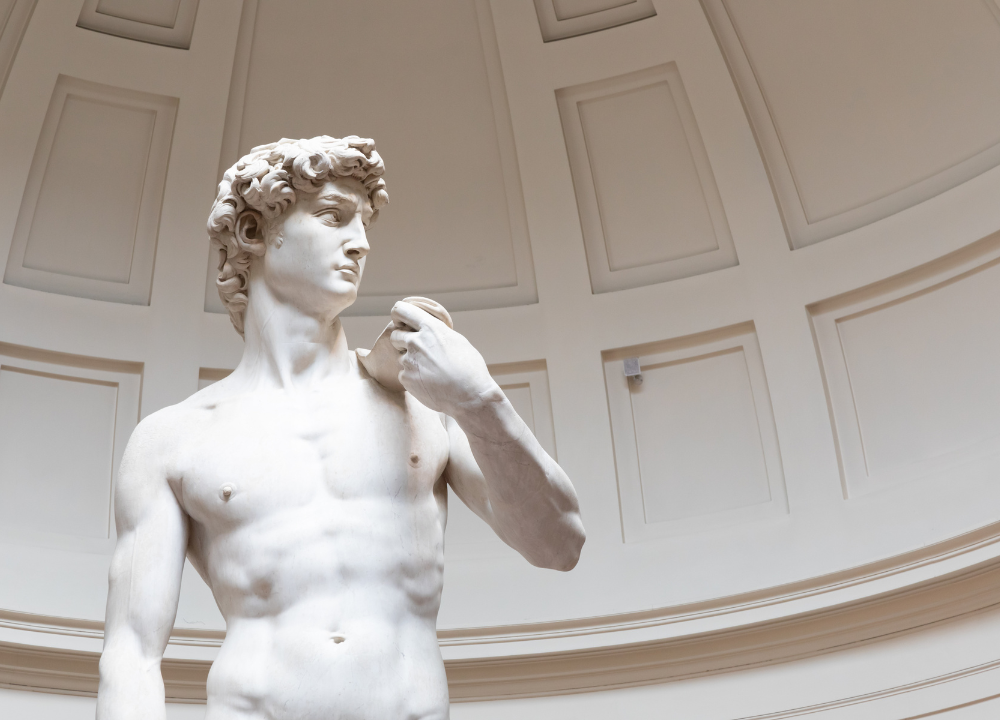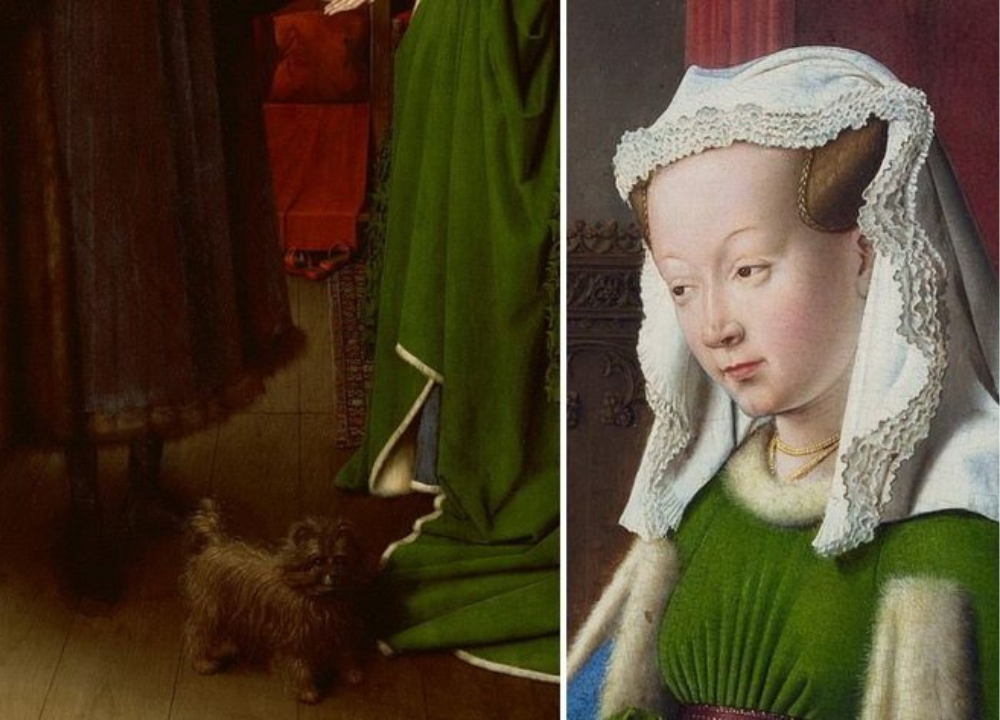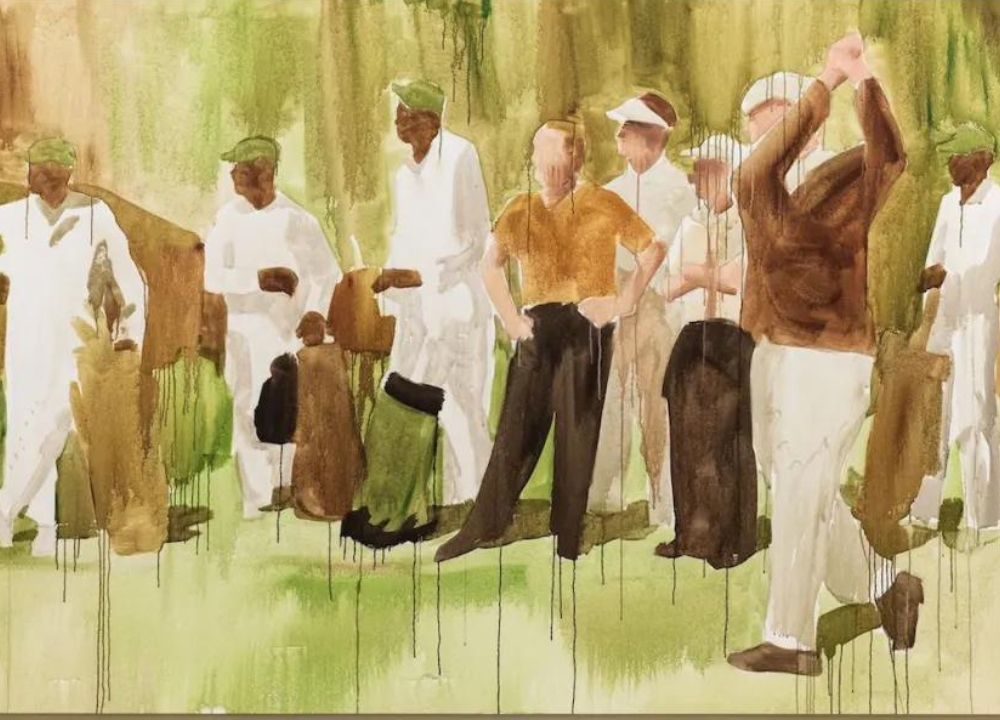Michelangelo’s masterpieces continue to influence the world of art with their timeless impact. From his iconic sculptures to breathtaking frescoes, his work remains highly revered and admired.
The Life And Works Of Michelangelo
Michelangelo, a name synonymous with genius and artistry, is hailed as one of the greatest artists of all time. Born on March 6, 1475, in Caprese, a small village in Tuscany, Italy, Michelangelo Buonarroti displayed incredible talent and imagination from an early age. His extraordinary contribution to the world of art, spanning sculptures, paintings, and architecture, continues to captivate and inspire artists and art enthusiasts across the globe.
Early Life And Training
Michelangelo’s artistic journey began taking shape during his early years. Growing up in Florence, where the Renaissance was in full swing, he was exposed to the works of renowned artists like Donatello and Masaccio. At just thirteen years old, he apprenticed with the painter Domenico Ghirlandaio, honing his skills in the realm of painting. It was during this time that he developed a passion for the art of sculpting, thanks to his mentorship under Bertoldo di Giovanni, a master sculptor in Florence’s Medici Garden.
Sculptures
Michelangelo’s sculptural masterpieces are renowned for their astounding level of detail, emotional intensity, and lifelike qualities. His most iconic work, the marble statue of David stands tall at the Galleria dell’Accademia in Florence, capturing the strength and determination of the biblical hero. Another masterpiece, the hauntingly beautiful Pieta, resides in St. Peter’s Basilica in the Vatican City. This intricately carved statue portrays the body of Jesus cradled tenderly by his grieving mother, Mary. Michelangelo’s expertise in sculpting also shines through his breathtaking Florentine Pietas and his larger-than-life sculptures for the tomb of Pope Julius II.
Paintings
Michelangelo’s extraordinary talent extended beyond the realm of sculpting and found expression in his awe-inspiring paintings. His magnum opus, the Sistine Chapel ceiling, took him four years to complete and is considered a pinnacle of Renaissance art. With impeccable skill and meticulous attention to detail, Michelangelo depicted various biblical scenes, such as the Creation of Adam and the Last Judgment, on the ceiling of the Vatican’s most famous chapel. In addition to the Sistine Chapel, his paintings adorn the walls of the Medici Chapel in Florence, showcasing his ability to capture the human form with unparalleled grace and realism.
Architecture
In addition to his prowess in painting and sculpture, Michelangelo left an indelible mark on the world of architecture. He played a significant role in the construction of St. Peter’s Basilica in Rome, contributing to its design and structural aspects. His architectural vision can also be witnessed in the Laurentian Library in Florence, a stunning masterpiece known for its innovative staircase and harmonious use of space. It is through his architectural creations that Michelangelo seamlessly blended art and engineering, leaving a lasting impact on the field.


The Creation Of David
One of the most iconic sculptures in the history of art, Michelangelo’s David has captivated audiences for centuries. Carved by the Italian master Michelangelo between 1501 and 1504, this masterpiece stands as a testament to Michelangelo’s skill and his profound influence on the world of art. In this section, we will explore the background and context of the creation of David, provide a detailed description of the sculpture itself, and delve into the symbolism and significance that this awe-inspiring work holds.
Background And Context
To understand the significance of Michelangelo’s David, it is important to consider the historical and cultural context in which it was created. Commissioned by the Opera del Duomo in Florence, Italy, the sculpture was intended to be one of several biblical figures to adorn the Florence Cathedral. Michelangelo was just 26 years old when he began sculpting David, and it was his first major commission in the city.
Florence was experiencing a period of political unrest during Michelangelo’s time, with tensions rising between the ruling Medici family and the Republic of Florence. As a symbol of Florence’s defiance and independence, David became a powerful statement of civic pride in addition to its religious connotations. Michelangelo’s choice to depict David, a biblical hero who defeated the giant Goliath, resonated with the Florentine people who saw themselves as brave defenders of their city.
Description Of The Sculpture
Standing at an impressive height of 17 feet, Michelangelo’s David is a marvel of Renaissance sculpture. The statue depicts David in a triumphant pose, his body poised in a dynamic S-curve that conveys both strength and grace. Carved from a single block of marble, the level of detail and realism achieved by Michelangelo is truly remarkable.
The sculpture captures David in a moment of anticipation and concentration, just before his battle with Goliath. His facial expression is intense, and his body appears tense as he prepares to sling his stone. Every muscle and sinew is depicted with precision, creating a sense of lifelike energy and movement. From the intricate details of the hands and feet to the delicate features of the face, Michelangelo’s attention to anatomical accuracy is unparalleled.
Symbolism And Significance
Michelangelo’s David holds deep symbolism and significance that extends beyond its biblical subject matter. The sculpture represents the ideal human form, with its perfect proportions and balanced composition. David’s nudity, although controversial at the time of its creation, was seen as a symbol of purity and innocence.
Furthermore, David embodies the ideals of the Renaissance era, characterized by the revival of classical Greek and Roman art. Michelangelo’s interpretation of the biblical hero draws inspiration from ancient Greek sculptures, reflecting a return to the appreciation of the human body as a work of art.
The enduring influence of David can be seen in the countless replicas and reinterpretations of the sculpture throughout history. It has inspired artists and sculptors for centuries, serving as a testament to Michelangelo’s artistic genius and his lasting impact on the world of art.
The Ceiling Of The Sistine Chapel
When it comes to the world of art, few masterpieces can match the iconic status of Michelangelo’s frescoes on the ceiling of the Sistine Chapel. This monumental work of art has stood the test of time and continues to captivate audiences from all over the world. From the commissioning of the project to the design and execution, and the depiction of iconic scenes, Michelangelo’s masterpiece remains a timeless influence on the world of art.
Commissioning Of The Project
The commissioning of the Sistine Chapel ceiling project was a significant moment in Michelangelo’s career. In 1508, Pope Julius II commissioned the renowned artist to paint the ceiling of the chapel, which was built in the late 15th century. It was a grand undertaking, as the ceiling spans approximately 5,000 square feet.
Michelangelo initially hesitated to accept the commission, considering himself a sculptor rather than a painter. However, the Pope’s insistence and recognition of his talent eventually convinced him to take on the challenge. This marked the beginning of a remarkable artistic journey that would result in one of the most celebrated works of art in history.
Design And Execution
The design and execution of the Sistine Chapel ceiling project showcased Michelangelo’s unparalleled artistic vision and technical skill. He spent years meticulously planning and preparing for the task at hand, employing his anatomical knowledge and mastery of perspective to create an extraordinary composition.
To achieve the desired visual effect, Michelangelo divided the ceiling into various sections, each depicting different scenes from the Bible. The central portion portrays nine scenes from the Book of Genesis, including the iconic scenes of the Creation of Adam and the Fall of Man.
Working in a challenging environment, Michelangelo had to paint on his back while standing on scaffolding. Despite the physical difficulties, he obsessively pursued perfection, often repainting sections multiple times until he was satisfied with the result. His dedication to his craft and tireless work ethic are evident in every brushstroke that adorns the Sistine Chapel ceiling.
Iconic Scenes Depicted
The Sistine Chapel ceiling is renowned for its depiction of iconic scenes that have become synonymous with Michelangelo’s name. Among these scenes is the famous Creation of Adam, where God reaches out to touch Adam’s finger, symbolizing the infusion of life into humankind. This image has become an enduring symbol of the relationship between God and humanity.
Another notable scene is the dramatic depiction of the Fall of Man, which portrays Adam and Eve’s expulsion from the Garden of Eden. The intricate details and expressive figures in this scene reveal Michelangelo’s ability to convey complex emotions through his art.
Besides these renowned scenes, the Sistine Chapel ceiling also showcases various biblical narratives, such as Noah’s Ark, the Great Flood, and the stories of Abraham and Isaac. Each scene is brought to life with Michelangelo’s signature style, characterized by his use of vibrant colors, dynamic composition, and impeccable anatomical accuracy.
Michelangelo’s masterpieces on the ceiling of the Sistine Chapel continue to inspire and influence artists to this day. Their enduring beauty and artistic brilliance serve as a reminder of the timeless power of art and its ability to transcend the boundaries of time and culture.
The Last Judgment
The Last Judgment is one of the most iconic and influential masterpieces created by the legendary artist, Michelangelo. This fresco, located on the altar wall of the Sistine Chapel in Vatican City, is a testament to his exceptional artistic talent and visionary imagination.
Historical And Religious Context
To truly appreciate the significance of The Last Judgment, we must first delve into its historical and religious context.
Painted between 1536 and 1541, The Last Judgment was a commissioned work by Pope Clement VII and continued by Pope Paul III. This period marked the tumultuous years of the Protestant Reformation, when the Catholic Church faced criticism and challenges to its authority.
The Last Judgment embodies profound religious themes, illustrating the second coming of Christ and the final judgment of souls.
Description Of The Fresco
The Last Judgment is an awe-inspiring fresco spanning over 12,000 square feet. Michelangelo’s sheer artistic brilliance is evident in the grand scale and intricate details depicted.
The centerpiece of the fresco portrays Christ in the center, surrounded by saints, angels, and the blessed rising to heaven. On the left side, souls condemned to hell are depicted in a harrowing manner, writhing in agony and despair.
The figures in The Last Judgment are anatomically accurate and exquisitely rendered, showcasing Michelangelo’s unrivaled talent in capturing the human form.
Critics And Reception
When The Last Judgment was unveiled, it sparked a mix of responses and controversies.
While many praised Michelangelo’s masterful brushstrokes and the symbolic depth of the fresco, others criticized the artist for the nudity depicted in the painting. This led to subsequent alterations by Daniele da Volterra, who painted draperies over the nude figures to appease the critics.
However, despite the criticism, The Last Judgment has stood the test of time and continues to captivate audiences with its profound themes and artistic brilliance. Today, it remains a testament to Michelangelo’s lasting influence on the world of art.
Legacy And Influence
Michelangelo’s masterpieces have left a timeless influence on the world of art, shaping the way we perceive beauty and creativity. From the intricate details of the Sistine Chapel’s ceiling to the powerful symbolism of David, his legacy continues to captivate and inspire artists and art enthusiasts alike.
Michelangelo, the Renaissance master, left behind a legacy that continues to shape the world of art. His influence can be seen in the artistic techniques and style that have been passed down through the centuries, inspiring both contemporaries and future artists. Furthermore, Michelangelo’s iconic works have made their way into popular culture, cementing his place as one of the most revered and recognized figures in art history.
Impact On Artistic Techniques And Style
Michelangelo’s innovative approach to art revolutionized the way artists approached their craft. His mastery of techniques such as chiaroscuro, which involves the subtle play of light and shadow to create depth and volume, changed the way artists depicted and sculpted human forms. By carefully manipulating light and shadow, Michelangelo was able to bring out the anatomical details, emotional intensity, and sense of realism in his sculptures and paintings.
Beyond his technical skills, Michelangelo’s style was characterized by his attention to detail and his ability to capture the human form in its most idealized state. His sculptures, such as the famous “David” and “Pieta,” showcase his ability to imbue stone with a lifelike quality, making the viewer feel as if they are witnessing a moment frozen in time. His paintings, such as the frescoes in the Sistine Chapel, demonstrate his mastery of composition and storytelling, with each figure seamlessly interacting with the others to convey a narrative.
Inspiration For Future Artists
Michelangelo’s works continue to serve as a wellspring of inspiration for artists of all generations. The sheer beauty, complexity, and emotional depth of his pieces have captivated countless artists who strive to emulate his skill and vision. From the Renaissance to the present day, artists have drawn inspiration from Michelangelo’s ability to capture the human spirit and transcend time through his art. Whether it be through the study of his anatomical precision, the exploration of his dramatic use of light and shadow, or the sheer ambition of his monumental compositions, Michelangelo’s influence can be found in the brushstrokes, sculptures, and imaginative creations of artists worldwide. His legacy lives on as artists incorporate his techniques and style into their own work, paying homage to the master while forging their own unique artistic paths.
Popular Culture References
Michelangelo’s impact on popular culture is undeniable. His works have become an integral part of our collective consciousness, inspiring numerous artistic reinterpretations and serving as references in various forms of media. From movies and television shows to music and literature, Michelangelo’s masterpieces have left an indelible mark on popular culture. For example, the iconic image of Adam reaching out to God in Michelangelo’s fresco “The Creation of Adam” has been reproduced and parodied countless times, becoming a symbol of the human quest for knowledge and connection. In films such as “The Shawshank Redemption,” the powerful imagery of Michelangelo’s art is used to symbolize themes of hope, redemption, and the pursuit of freedom. Moreover, Michelangelo’s works have influenced fashion, architecture, and design. The clean lines, balanced proportions, and sense of grandeur found in his sculptures and architectural designs have inspired countless creations beyond the realm of fine art. From fashion designers drawing inspiration from his draped fabrics to architects incorporating elements of his architectural style into their buildings, Michelangelo’s influence remains pervasive and highly revered. In conclusion, Michelangelo’s legacy and influence continue to be felt in the world of art. His impact on artistic techniques and style has shaped the way artists approach their craft, while his works serve as a wellspring of inspiration for future generations. Furthermore, Michelangelo’s masterpieces have become embedded in popular culture, permeating various forms of media and serving as a symbol of creativity, beauty, and human expression. The timeless influence of Michelangelo’s art ensures that his genius will continue to be appreciated and celebrated for generations to come.
Frequently Asked Questions Of Michelangelo’s Masterpieces: A Timeless Influence On The World Of Art
Who Is Michelangelo And Why Is He Famous?
Michelangelo was an Italian artist and sculptor who is famous for his masterpieces like the Sistine Chapel ceiling and David statue. He is renowned for his exceptional talent, creativity, and contribution to the world of art.
What Are Michelangelo’s Most Famous Artworks?
Michelangelo’s most famous artworks include the Sistine Chapel ceiling, the sculpture of David, and the Pietà. These masterpieces reflect his incredible skill, attention to detail, and his ability to capture human emotion in art.
How Did Michelangelo’s Artwork Influence The World Of Art?
Michelangelo’s artwork had a profound influence on the world of art. His innovative techniques, mastery of anatomy, and ability to depict human emotion set new standards for artists. His works continue to inspire and influence artists even today, making him a timeless figure in the art world.
Conclusion
Michelangelo’s masterpieces have stood the test of time and continue to inspire artists and art enthusiasts alike. From his breathtaking sculptures to his stunning frescoes, he has left an indelible mark on the world of art. His ability to capture emotion and convey it through his work is unparalleled, making him a true visionary.
The influence of Michelangelo’s art can still be felt today, reminding us of the enduring power of creativity and the impact it can have on the world.




